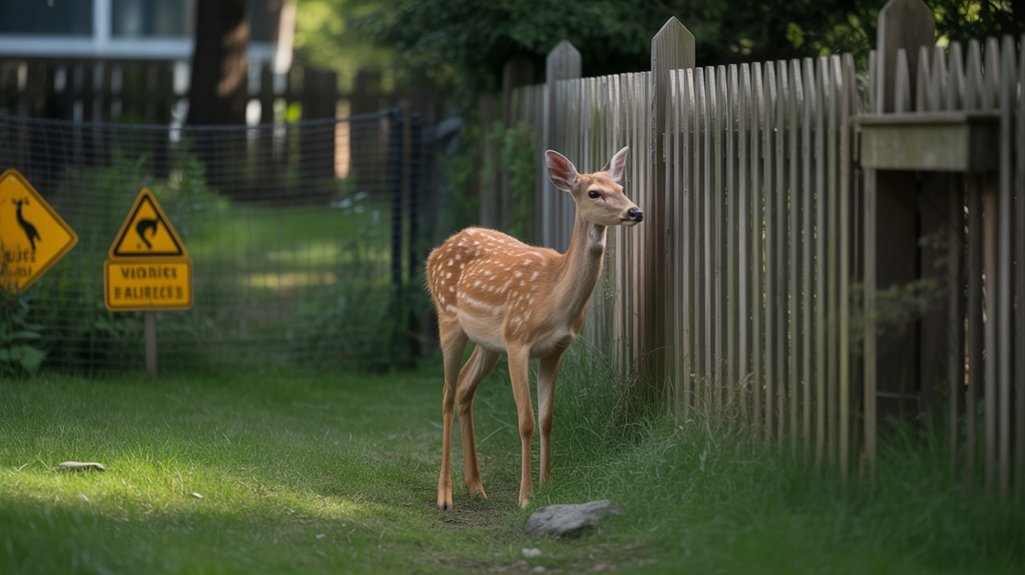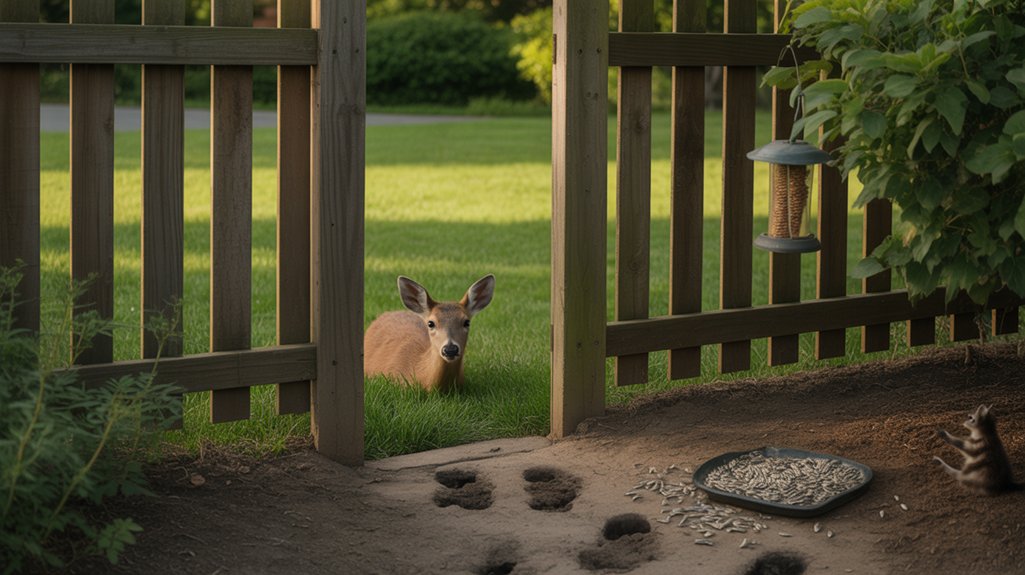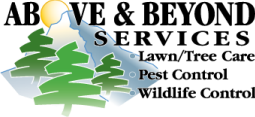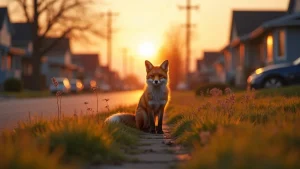Wildlife Intrusions in Centennial and Parker: Signs, Risks, and Prevention
If you live in Centennial or Parker, you might’ve noticed an increase in wildlife encounters lately. Animals like raccoons and deer are adapting to urban life, leading to signs of their presence around your property. Understanding these signs and the potential risks can help you protect your home and family. But what steps can you take to prevent wildlife intrusions in Centennial and Parker? Discover practical strategies to create a safer environment for both you and local wildlife.
Understanding Wildlife Intrusions

When you think about wildlife intrusions in Centennial and Parker, it’s easy to overlook the fact that these encounters often happen more frequently than you might expect.
Understanding wildlife behavior is crucial to recognizing the signs of an intrusion. Animals adapt to habitat encroachment, seeking food and shelter closer to human spaces. This shift can lead to unexpected interactions, especially in suburban areas like Centennial and Parker.
You might notice signs such as tracks, droppings, or even damage to your property, indicating that wildlife is nearby. By being aware of these behaviors and their motivations, you can take proactive steps to mitigate risks.
Secure your trash cans, close off entry points, and create a less inviting environment for these creatures to help reduce potential wildlife intrusions in Centennial and Parker.
Common Wildlife Species in Centennial and Parker

Understanding the signs of wildlife intrusions in Centennial and Parker is only part of the equation; knowing which species are common in these areas can help you better prepare for encounters.
In these areas, you’ll often come across urban wildlife like raccoons, foxes, and deer, which have adapted to suburban environments. These animals might rummage through your trash or wander into your yard, seeking food or shelter.
Local fauna also includes various bird species, such as pigeons and sparrows, which can create nests in your eaves. Being aware of these common creatures allows you to take preventive measures, ensuring your home remains a safe space from wildlife intrusions in Centennial and Parker.
Signs of Wildlife Presence

Wildlife presence can be identified through various signs that indicate their activity around your home. You might notice tracks in the soil or mud, which reveal wildlife behavior, or look for droppings that can signal what species are nearby.
Scratches on trees or dig marks in your garden are also strong habitat indicators. If you hear unusual noises at night, it could mean animals are foraging or nesting nearby.
Additionally, chewed plants or overturned stones can suggest that wildlife is exploring your yard. By observing these signs, you can better understand the wildlife in your area and take necessary precautions to keep your home safe from potential wildlife intrusions in Centennial and Parker.
Stay vigilant to protect your space!
Risks Associated With Wildlife Encounters
While enjoying nature, you may not realize the potential risks that come with wildlife encounters. As urban encroachment continues to expand, wildlife behavior changes, often leading animals closer to human activity. This can increase the likelihood of unexpected encounters with animals like deer, raccoons, or coyotes in Centennial and Parker.
These animals may feel threatened and react defensively, putting both you and them at risk. Additionally, some wildlife can carry diseases that pose health hazards, such as rabies or hantavirus.
It’s essential to remain vigilant and respect their space while hiking or exploring. Understanding their behavior and recognizing the signs of wildlife activity can help you avoid dangerous encounters and promote safer coexistence with the wildlife around you.
Human-Wildlife Conflicts: Causes and Consequences
As urban areas expand and encroach on natural habitats, conflicts between humans and wildlife have become increasingly common. These encounters often stem from habitat encroachment and resource competition. As wildlife seeks food and shelter, they may invade your property, leading to potential dangers.
| Causes | Consequences |
|---|---|
| Habitat Encroachment | Property Damage |
| Resource Competition | Health Risks |
| Increased Human Presence | Wildlife Displacement |
Understanding these dynamics can help you recognize the patterns of human-wildlife conflicts. By acknowledging the reasons behind these interactions, you can better appreciate the need for coexistence strategies. Ultimately, addressing these conflicts is crucial for the safety of both residents and local wildlife in Centennial and Parker.
How to Safeguard Your Property
To effectively safeguard your property from wildlife intrusions in Centennial and Parker, it’s essential to take proactive measures that deter unwanted visitors.
Start by evaluating fencing options that suit your needs; tall, sturdy fences can keep larger animals at bay, while smaller barriers might be effective against smaller critters. Consider adding features like an underground barrier to prevent burrowing animals.
Next, focus on habitat modification around your property. Trim back overgrown vegetation and remove any food sources, such as pet food or birdseed, that might attract wildlife.
Secure garbage bins with tight-fitting lids and compost responsibly. By implementing these strategies, you’ll create an environment that discourages wildlife from entering, keeping your property safer and more secure.
For additional guidance, explore this Wildlife Trusts guide on creating wildlife-friendly gardens.
Creating Wildlife-Friendly Spaces
Creating wildlife-friendly spaces can enrich your property and support local ecosystems, especially if you design your yard with the needs of various species in mind in Centennial and Parker.
Here are three simple ways to get started:
- Plant native plants: These species require less water and attract local wildlife, providing food and shelter.
- Create safe habitats: Add features like birdhouses, bee hotels, and brush piles to offer refuge for small animals.
- Avoid pesticides: Chemical treatments can harm beneficial insects and disrupt the local food chain.
Community Initiatives for Wildlife Management
Community initiatives for wildlife management play a crucial role in balancing human needs with the well-being of local ecosystems in Centennial and Parker.
By participating in community education programs, you can learn how your actions impact wildlife and discover effective strategies for coexistence. Workshops and seminars often focus on the importance of habitat restoration, encouraging residents to engage in projects that enhance local environments.
You might consider joining volunteer groups that work on restoring natural habitats, which not only benefits wildlife but also fosters community spirit.
Collaborating with local organizations can amplify your efforts, ensuring sustainable practices for the future. Together, you and your neighbors can create a harmonious balance that supports both wildlife and the community’s needs.
Reporting Wildlife Sightings and Concerns
When you spot wildlife in your neighborhood, reporting those sightings and any concerns is essential for both safety and conservation efforts. Effective wildlife reporting helps local authorities manage animal populations and reduce human-wildlife conflicts in Centennial and Parker.
Follow these sighting protocols to ensure your report is helpful:
- Document Details: Note the species, time, and location of the sighting.
- Assess Behavior: Observe if the animal appears aggressive, injured, or distressed.
- Contact Authorities: Reach out to local wildlife agencies or animal control to report your findings.
Resources for Residents on Wildlife Safety
To ensure your safety and that of local wildlife, it’s crucial to access the right resources. Start by checking local wildlife education programs that provide valuable information on animal behavior and habitat. These resources can help you understand how to coexist with wildlife safely in Centennial and Parker.
Familiarize yourself with safety guidelines, which often include tips on securing trash, closing entry points to your home, and avoiding direct contact with wildlife. Local websites and community centers often have brochures and workshops to enhance your knowledge.
Additionally, consider joining neighborhood groups focused on wildlife safety, as they can offer real-time information and shared experiences. Staying informed is key to preventing conflicts and ensuring a harmonious environment for both you and the wildlife around you.
Frequently Asked Questions
What Time of Year Do Wildlife Intrusions Typically Occur?
Wildlife intrusions in Centennial and Parker typically peak during spring and fall, aligning with seasonal patterns. As animals search for food or shelter, you might notice increased activity around your home. Staying vigilant can help you prepare for these occurrences.
Are Certain Neighborhoods More Prone to Wildlife Encounters?
Certain neighborhoods, based on their demographics, can be more prone to wildlife intrusions in Centennial and Parker. You’ll notice that areas near parks or water sources often show increased wildlife patterns, making them hotspots for potential encounters.
How Can I Identify Animal Tracks or Droppings?
To identify animal tracks, look for unique shapes and sizes in the mud or snow. For droppings analysis, observe the size, shape, and contents to determine the animal. Both methods reveal important wildlife signs.
What Should I Do if I Encounter a Wild Animal?
If you encounter a wild animal, prioritize your safety. Stay calm, back away slowly, and avoid direct eye contact. Use encounter tips like making noise to scare it away, ensuring you maintain a safe distance.
Are There Any Local Wildlife Rehabilitation Centers?
Yes, there are local wildlife rescue and animal rehabilitation centers you can contact. They provide care for injured or orphaned wildlife, ensuring these animals receive the help they need to recover and return to their natural habitat.
In conclusion, staying aware of wildlife intrusions in Centennial and Parker is crucial for your safety and the well-being of local animals. By recognizing signs of their presence and understanding the risks involved, you can take proactive steps to prevent encounters. Securing your property and fostering a wildlife-friendly environment can lead to a harmonious coexistence. For professional assistance, contact Above & Beyond Services to address wildlife intrusions in Centennial and Parker. Remember, your actions can make a difference—let’s work together to protect both our homes and the wildlife that shares our community.
Key Takeaways
- Common signs of wildlife intrusions in Centennial and Parker include tracks, droppings, and property damage, indicating animal presence around homes.
- Urban wildlife such as raccoons, foxes, and deer often forage through trash, increasing the likelihood of human-animal encounters.
- Risks from wildlife encounters include potential diseases and defensive behavior from animals feeling threatened, necessitating caution.
- Prevention strategies include securing garbage bins, closing entry points, and maintaining a clean yard to deter wildlife from entering residential areas.
- Educating neighbors about local wildlife and advocating for wildlife-friendly practices fosters a safer coexistence and minimizes risks associated with wildlife intrusions in Centennial and Parker.




